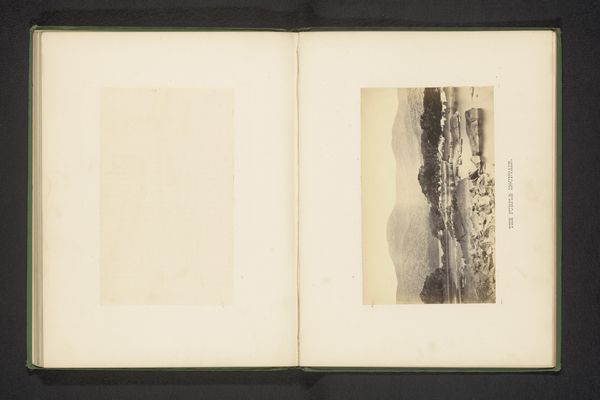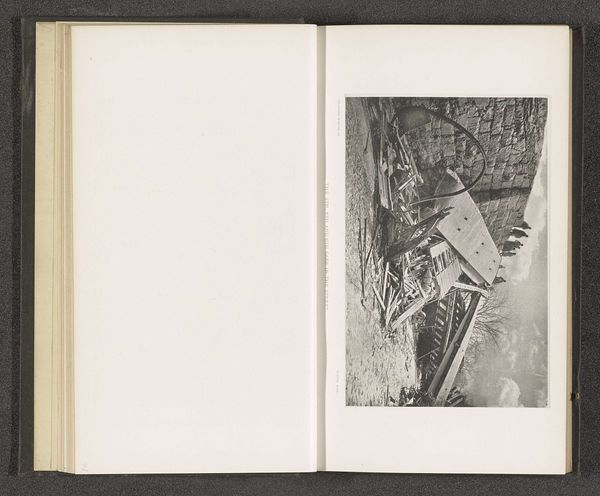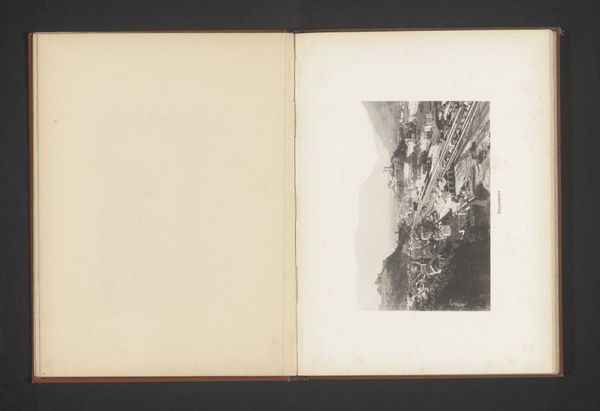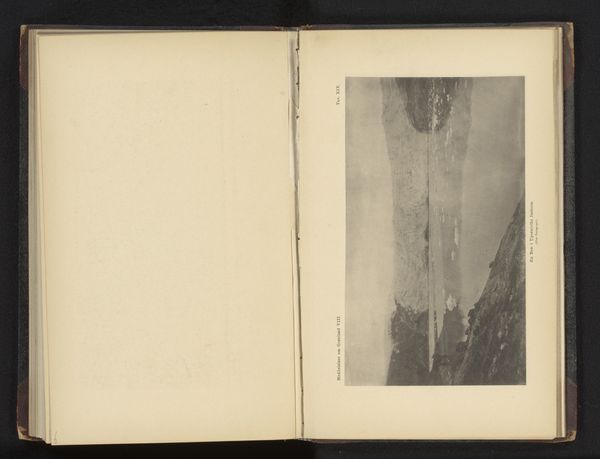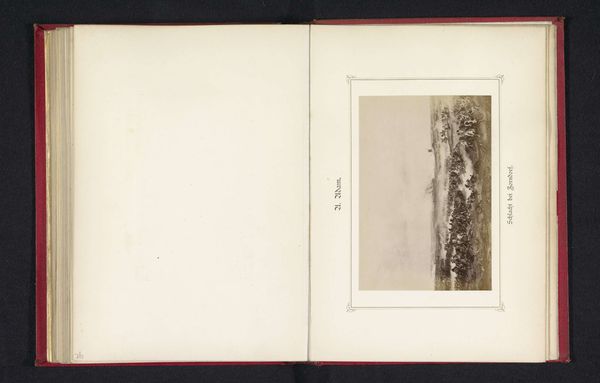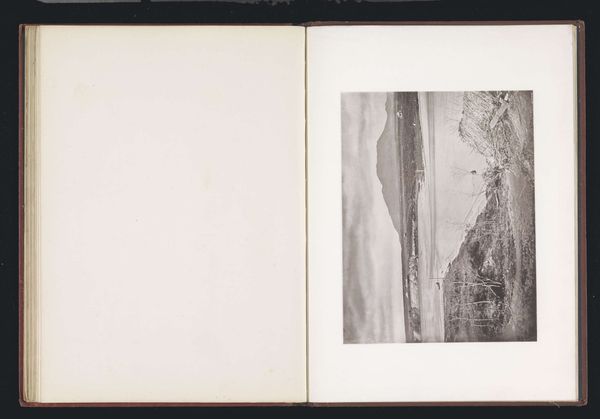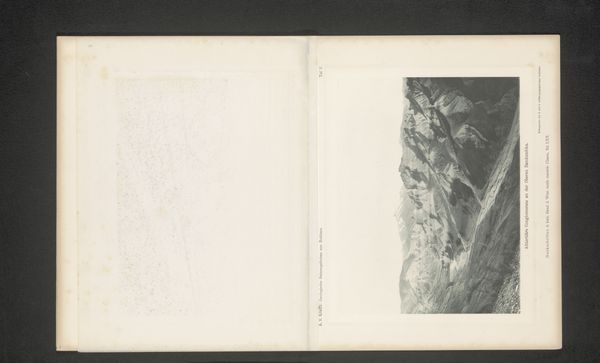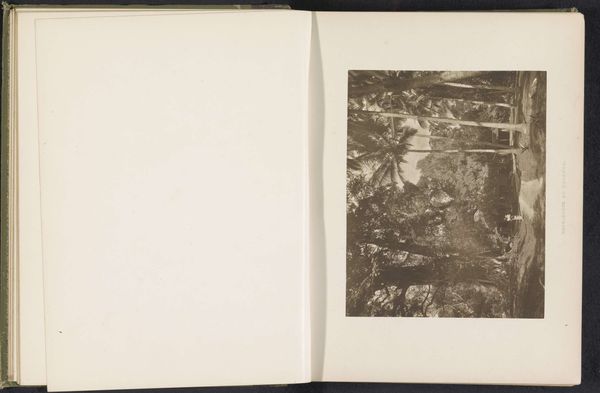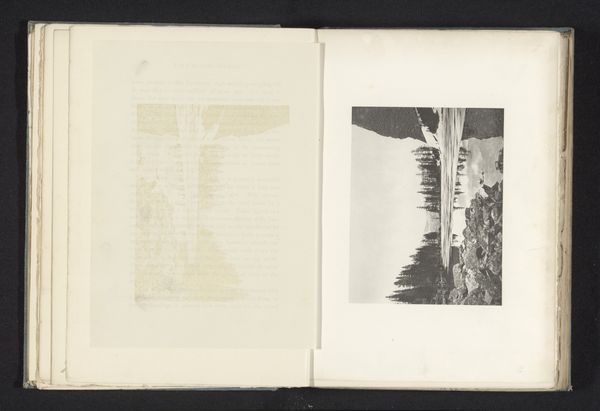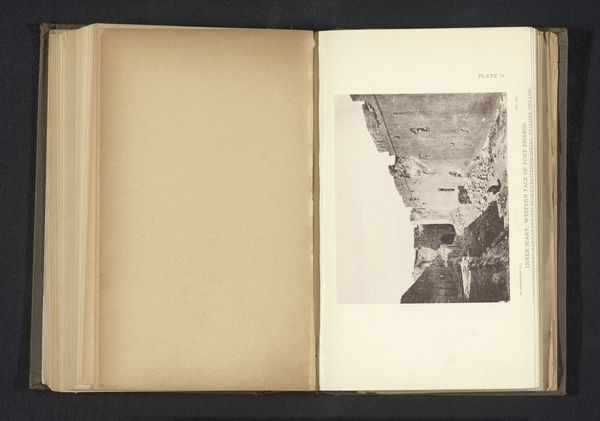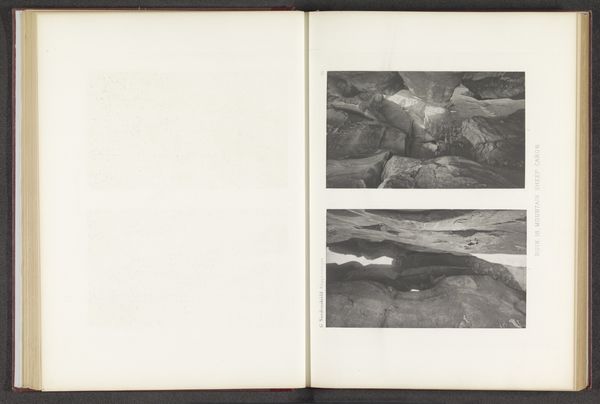
print, photography, gelatin-silver-print
# print
#
landscape
#
photography
#
gelatin-silver-print
#
realism
Dimensions: height 102 mm, width 178 mm
Copyright: Rijks Museum: Open Domain
Curator: This compelling gelatin-silver print, titled "The 1st, 2nd and 3rd cars and the roof of the 4th car on the embankment," dates from after 1914. The anonymous artist captured a scene of… wreckage? Editor: Destruction is the first thing that hits me, actually. The photograph has a definite feeling of catastrophe, like a disaster. It seems almost like it’s been captured on the precipice, doesn’t it, visually teetering between stillness and motion? Curator: The photograph appears to portray the aftermath of a train accident. Given the apparent date of the print, it prompts consideration of the industrial context of the early 20th century. The expansion of railway networks brought efficiency but also risks, and this image speaks to the potential for technological failure and its impact on human lives. What can you tell from the formal composition? Editor: Formally, the linear perspective is very striking, creating a deep recession into the picture plane, all lines angled so sharply that it feels vertiginous, disorienting. That’s definitely a compositional tactic heightening the emotional tenor. The high contrast intensifies the feeling of bleakness. What really draws the eye is that interplay of dark, twisted forms against areas of near-blank whiteness. Curator: Precisely, and that whiteness surrounding the scene seems significant too, no? It focuses our attention. What's interesting about this as a gelatin-silver print, and the process involved, is how that materiality renders the scene. The smooth tones give a certain clarity, while the subject evokes the physical violence of industry, which might mirror anxieties related to capitalism and societal progress at that time. It certainly provokes discussion about labour relations, infrastructure funding and regulation in place - or not in place - at that moment. Editor: From a purely aesthetic stance, though, the almost abstract arrangement of forms makes the whole thing strangely beautiful. There's an odd harmony even in all this disruption, it makes one appreciate the artistic construction in the midst of literal destruction. And that juxtaposition really hits home for me. Curator: Well, for me it evokes an investigation into the artist's gaze: were they drawn by an inherent tension between technology and the fragility of society, as if they considered how progress could be so easily derailed - literally in this instance! Editor: I still find that perspective and tonal balance really makes you pause. Curator: Indeed. It allows us a peek, not only at the physical world rendered, but at an era, caught, developed and delivered by means both immediate and archival.
Comments
No comments
Be the first to comment and join the conversation on the ultimate creative platform.
